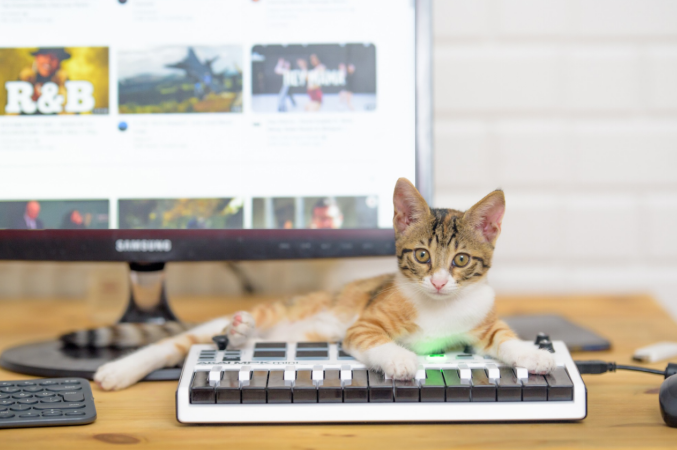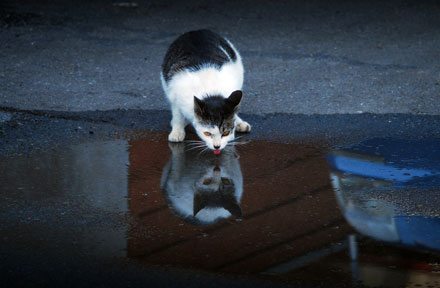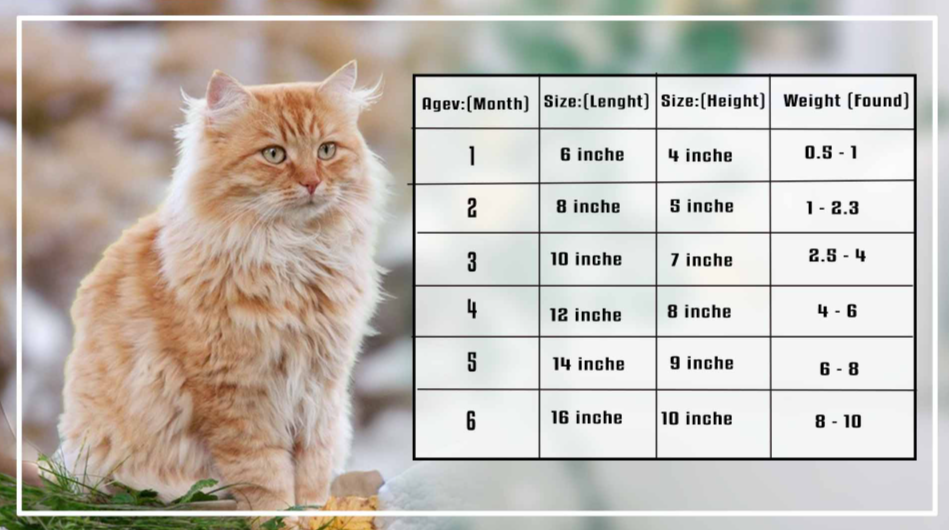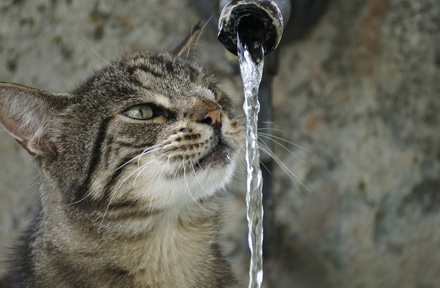Jul 14, 2025
Author:Amanda Lyu

Picture a dark level in a side-scrolling world. A single meow pierces through the 8-bit song, and every player leans closer. That simply sound heralds the introduction of video game cats—a new type of creature somewhere between real fur and digital fun. The combination of agility, mystery, and mischief has drawn developers to cats since the early 1980s, and now they are subjects of AAA releases, cozy simulators, and countless meme-worthy videos on social media.
Why do they work so well in games? To figure it out, we will consider a combination of biology, culture, and designer craft, which is worth an in-depth look. In the following sections, we will trace the pawprints of digital felines from their rudimentary sprite predecessors to photorealistic leads, while considering how these avatars reflect—and may even enhance—our relationship with the real ones curled up next to us.
Early home video game consoles left developers with little memory or detail on the screen to work with, but they nevertheless came up with a character that tried to graphically depict the sleek body and curves of a cat. In 1983, Namco's "Mappy" introduced the player as a police mouse being chased by orange cat burglars called Meowkies.
Their square tails dashed across the black screens, and yet you understood that cats can be both inviting and threatening. ColecoVision's "Cat Trax" was released a year later, and it flipped the nature of putting cats on screen (literally), when the player guided a brave kitten through a maze of obstacles. Square pixels meant that every single pixel mattered on the screen; programmers had no option but to focus on a prominent and recognizable silhouette, as well as quick, spring-loaded jumps.
They had no doubt invented mechanisms that became standards over the years. Today, even independent game hits have to rely on dark outlines, bright eyes, etc., to produce a cat's presence from such busy backgrounds.
In the 1990s, there was a mascot race that featured: hedgehogs spinning, plumbers jumping, and most importantly, cats getting full franchises. Bubsy the Bobcat debuted in 1993 with exaggerated yowls and an abundance of bright gumption. While future games in the series faltered, Bubsy established that video game cats could escort narrative, platform mechanics, and marketing campaigns.
Sega's Sonic series introduced Big the Cat in 1998, a gentle giant who would fish and deliver comic relief for players. There are critiques about Big's gameplay flow, but his slow pace delivered a meditative pause within an otherwise frenetic title, and it also demonstrated how cats can influence tempo in video games.
One of the most obscure milestones is Katt – The Time Warrior, a Japan-only Super Famicom title that allowed players to jump through time in the namesake of rescuing lost kittens. The title featured hand-drawn sprites and captured tail flicks years before the utilitarian rigging of bone structure and animations became commonplace.
By the 2000s, hardware could render soft fur and reflective eyes in full 3D. “Blinx: The Time Sweeper” (2002) gave players a vacuum-wielding cat who bent time, highlighting agility as a mechanic. Critics called Blinx “the first 4-D action hero,” but the real draw was how his feline form made rewind and fast-forward feel natural; cats dart, pause, and pounce in real life, so temporal control felt instinctive.
Fast-forward to 2022’s “Stray,” where players guide an orange tabby through a neon city of robots. The game soared in popularity because it nailed everyday cat motions—tightrope walks on railings, gentle head-butts, casual naps on cushions. Animators studied motion-capture recordings of real strays to capture that perfect shoulder roll.
The result? An immersive lens on urban isolation and hope. While you may not let your own pet roam cyberpunk alleys, you can learn real hydration lessons from scenes showing fountains. For instance, your cat may drink more if water moves; see why a simple fountain can help by reading about choosing the best fountain material.
Not every cat must speak or fight. Many developers use silent feline observers to guide mood or plot twists. In “The Legend of Zelda: Twilight Princess,” cats gather in a hidden village, hinting at past magic. Their gentle purr underlines quiet world-building without exposition. Independent horror title “Night in the Woods” employs Mae, an anthropomorphic cat whose wide eyes mirror youthful confusion. Her design frames mental-health themes through a cuddly lens, making heavy topics less intimidating.
Why do cats excel at symbolic roles? Their dual nature—aloof yet affectionate—fits ambiguous storytelling. A cat watching you from a rooftop might be friend or foe, guardian or spy. Designers tap this uncertainty to keep players guessing. Yet we derive comfort from the familiar twitch of ears or slow blink that signals safety. If a real cat blinks at you, you can return the gesture; it is a sign of trust. For deeper insights into feline body language, browse this piece on what your cat is saying.
A strong cat character goes beyond art; it shapes level layout, physics, and controls. Designers look at core cat abilities: vertical leaps, precise landings, and curiosity about tight spaces. “Gravity Rush” lets protagonist Kat (yes, with a “K”) flip gravity to walk on walls, echoing a cat’s knack for landing on feet. In side-scrollers, narrow vents and ledges give players hidden routes that feel “made for cats.” Audio cues matter too: a soft chime for landing, jingling bells for collectibles.
Cat care influences mechanics in subtle ways. Many games grant health boosts when the cat naps, mirroring real rest cycles. If you want to replicate healthy rest at home, remember the importance of portion-controlled meals that prevent nighttime food demands. Automated feeders can help; see a full guide on portion control for practical tips. Designers often add feeding puzzles in games to slow players down intentionally, mirroring slow feeders that reduce gulping.
Spending hours guiding a pawed avatar often nudges gamers to think about their own pets. “Neko Atsume,” the mobile hit, revolves around placing toys and treats to attract cartoon cats. Players learn that water variety, clean bowls, and safe hideouts increase feline visits. These lessons map to real care: older cats may need extra hydration strategies; check how you can help senior pets with this advice on keeping older cats hydrated.
The bond deepens when games model health events. “Cattails” includes vet visits and diet balance. Such gameplay loops mirror best practices like spaying to reduce roaming risk; if you are weighing that choice, consult the article on spay or neuter decisions. Other titles, such as “Cat Quest,” highlight the power of food upgrades. Real-world parallels include using timed feeders that align with vet-advised schedules. When players care for a digital cat, they rehearse habits that can improve actual pet welfare.
Moreover, games often show consequences of neglect. A virtual litter box left unclean lowers happiness scores, reminding owners to solve real-world issues like litter habits. In this way, video game cats act as empathy tutors, turning screen time into learning time.

Indie developers face tight budgets and must hook players fast. Cats help on both fronts. A single tail flick sells emotion without costly dialogue. Streamers amplify reach by sharing “aww” moments; social virality lowers marketing spend. Games like “Gato Roboto” (2019) repurpose classic Metroidvania anatomy but freshen it with a cat piloting a mech suit. This quirky idea drew press coverage far beyond typical indie exposure.
Cats also fit the “cozy game” wave—titles that deliver calm rather than conquest. “Calico” tasks players with running a cat café, decorating cupcakes, and cuddling giant kittens. Such relaxing loops exploded during global lockdowns, when players sought comfort and routine. The café’s design includes hydration stations similar to those in high-quality bowls; if you wonder about bowls versus fountains, read this comparison of fountain and bowl options.
Because so many cat games emerge from small teams, diversity of art styles grows. You can pet voxel kittens in “Catlateral Damage” one day, then roam hand-painted forests in “Spiritfarer” alongside Daffodil the cat the next. Each style rewrites the rulebook on how minimal or detailed a feline can appear while still feeling authentic.
As hardware evolves, so will our digital felines. VR headsets already allow players to kneel and feel scale: a gigantic Maine Coon brushing past can be both majestic and eerie. Motion controllers let you mimic laser pointers or dangling toys; AI algorithms can drive cats to chase them in real time. Future AI may personalize a companion that adapts to your play style, purring louder when you linger, urging speed when you rush.
Procedural animation promises smoother leaps and landings. Instead of canned sequences, a physics engine could calculate paw placement on the fly, matching any terrain. Such accuracy may remind owners of real-world quirks, like why cats dunk paws in moving water; discover reasons in this piece on paw dipping.
Cloud gaming opens new markets. A lightweight feline puzzler can run on a phone while heavy rendering happens off-device. This approach may invite busy pet parents, who can play while monitoring pets through a camera feeder at home. Thus, real and virtual cat care sync in one seamless loop.
With each tech stride, the cat archetype remains potent. It thrives on improved fur shaders and ray-traced whiskers, yet still relies on core truths: curiosity, grace, and occasional chaos.
Video game cats have come a long way from clunky sprites to ray-traced whiskers. They have been a vessel for the early exploration into platform physics, led new avenues for storytelling, and have educated millions of players about nutrition, hydration, and empathy. Cats work well in videogames because they reflect the mindset of the player, always exploring with intention, never satisfied to stick to a single path and ready to jump into the unknown.
If this experience inspires you to have a new appreciation for your own pet, maybe start by doing little things: establish a smart feeding schedule for guaranteed meals, try a portion control system, and learn how to take care of fountains to provide fresh drinking options. Taking some simple action can turn your full circle from the screen to the sofa, illustrating that the enchantment of digital design is a way to enhance life off the monitor.
At the end, eight simple words express an evolving legacy, that cats must travel their own path, and that games will follow. Over the next years, anticipate the development of more whiskered heroes and moonlit rooftops. Because if players continue to seek a balance of comfort and adventure, video game cats will continue to purr through code, lighting up our screens—and hearts—with each jump and playful paw.
Popular Post

What to Feed a Sick Dog With No Appetite? [2025 Guide]
May 16, 2023

Troubleshooting Common Issues with Automatic Pet Feeders: Tips & Tricks for Pet Owners
Oct 26, 2023

Why Does My Cat Cough After Drinking Water? 8 Potential Reasons
Mar 13, 2023

What is a standard Cat Weight chart by age Kg?
Mar 19, 2025

Why is My Cat Throwing up Water? Top 5 Causes Here
Feb 08, 2023
$99.99
$129.99
Copyright © 2025 WOPET. All Rights Reserved.